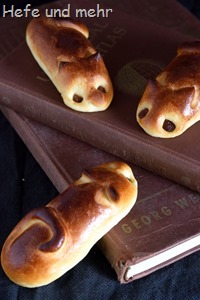 A reader told me about “Schulmäusen” (School mice), a small sweet roll filled with hazelnut praline. She tried to bake similar rolls in a spelt variant but struggled with them getting to dry. My brain worked a while on this idea in the background and came up with a recipe at the end – just in time for school start. As the name “Schulmaus” is a brand name, I decided to call my rolls Spelt mice and formed most of them like a mouse, too. But if you do not roll one end into a long tail, then you get the original form, too.
A reader told me about “Schulmäusen” (School mice), a small sweet roll filled with hazelnut praline. She tried to bake similar rolls in a spelt variant but struggled with them getting to dry. My brain worked a while on this idea in the background and came up with a recipe at the end – just in time for school start. As the name “Schulmaus” is a brand name, I decided to call my rolls Spelt mice and formed most of them like a mouse, too. But if you do not roll one end into a long tail, then you get the original form, too.
They are not a healthy snack, but a treat for small and big ones with a sweet tooth. The crumb is fluffy and the filling creamy – a good way to make school start a bit sweeter!

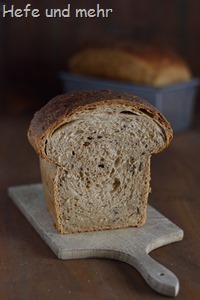 This Sandwich bread is a readers wish. But I needed two rounds, until I was really satisfied. In the first Variant I had a boiled soaker with whole spelt flour and seeds, but this added to much liquid to the dough. This resulted in a very instable crumb. The recipe needed adjustments!
This Sandwich bread is a readers wish. But I needed two rounds, until I was really satisfied. In the first Variant I had a boiled soaker with whole spelt flour and seeds, but this added to much liquid to the dough. This resulted in a very instable crumb. The recipe needed adjustments!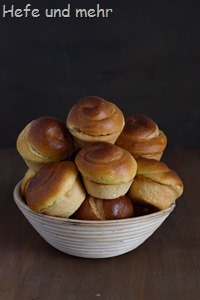 I met Honigreingerl some time ago and they trigger my “Have to bake” reflex of immediately. They are small Austrian pastries which are filled with a honey and cinnamon mixture. In their crumb you can find many small openings filled with the flavour of honey and cinnamon.
I met Honigreingerl some time ago and they trigger my “Have to bake” reflex of immediately. They are small Austrian pastries which are filled with a honey and cinnamon mixture. In their crumb you can find many small openings filled with the flavour of honey and cinnamon.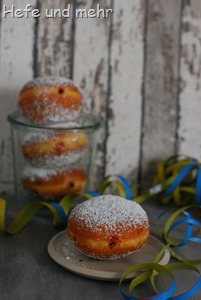
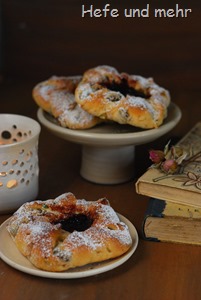 I can not tell how I learn about the Reformationsbrötchen (reformation rolls). But the idea somehow stuck in mind and so I had to bake them just in time for the 31. October (Reformation day).
I can not tell how I learn about the Reformationsbrötchen (reformation rolls). But the idea somehow stuck in mind and so I had to bake them just in time for the 31. October (Reformation day).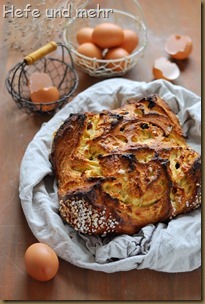 Last weekeend I realized how near Eastern is when my mom told me on the phone about her plans of dyeing eggs with her kids at school. And so I changed my plans for the bread baking course and developed a sweet recipe perfect for the Easter Breakfast. It is a sweet bread called which is made with the biga preferement. The subtle acidity of it helps to strengthen the gluten network. For a tender crumb the dough contains cream, egg yolk and some butter. By replacing the butter with cream the dough can rise in the fridge if needed.
Last weekeend I realized how near Eastern is when my mom told me on the phone about her plans of dyeing eggs with her kids at school. And so I changed my plans for the bread baking course and developed a sweet recipe perfect for the Easter Breakfast. It is a sweet bread called which is made with the biga preferement. The subtle acidity of it helps to strengthen the gluten network. For a tender crumb the dough contains cream, egg yolk and some butter. By replacing the butter with cream the dough can rise in the fridge if needed.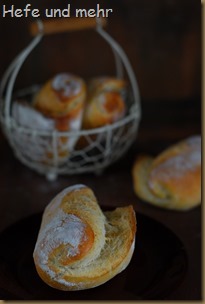 I mentioned already once or twice that I like to at
I mentioned already once or twice that I like to at 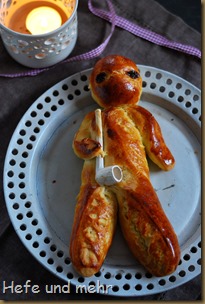
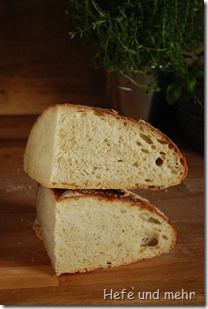
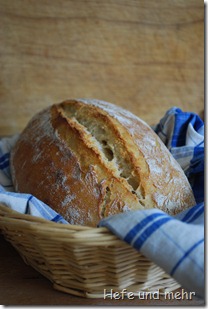 MC posted last week the portrait of the Baker
MC posted last week the portrait of the Baker